Happy New Year! Throughout 2024 I will continue to update my library of Decoded articles, in preparation for some upcoming changes. Let me know if you have suggested topics for my Decoded Q&A series, published monthly in Door Security + Safety Magazine.
This post was published in Doors & Hardware

With the continued focus on fire door assemblies, it’s important to be familiar with the basic requirements as well as what has changed in the more recent codes and standards. This article focuses on hinge requirements for fire doors, as mandated by NFPA 80 – Standard for Fire Doors and Other Opening Protectives.
Each edition of NFPA 80 refers to several ANSI/BHMA standards for hinges, including A156.1 (Butts & Hinges), A156.4 (Door Controls – contains pivot requirements), A156.17 (Self-Closing Hinges and Pivots), and A156.26 (Continuous Hinges). These standards contain detailed requirements about hinges, spring hinges, pivots, and continuous hinges. The edition of a referenced standard may vary from one edition of NFPA 80 to the next, so refer to the applicable edition of NFPA 80 to verify the effective date of the referenced standard.
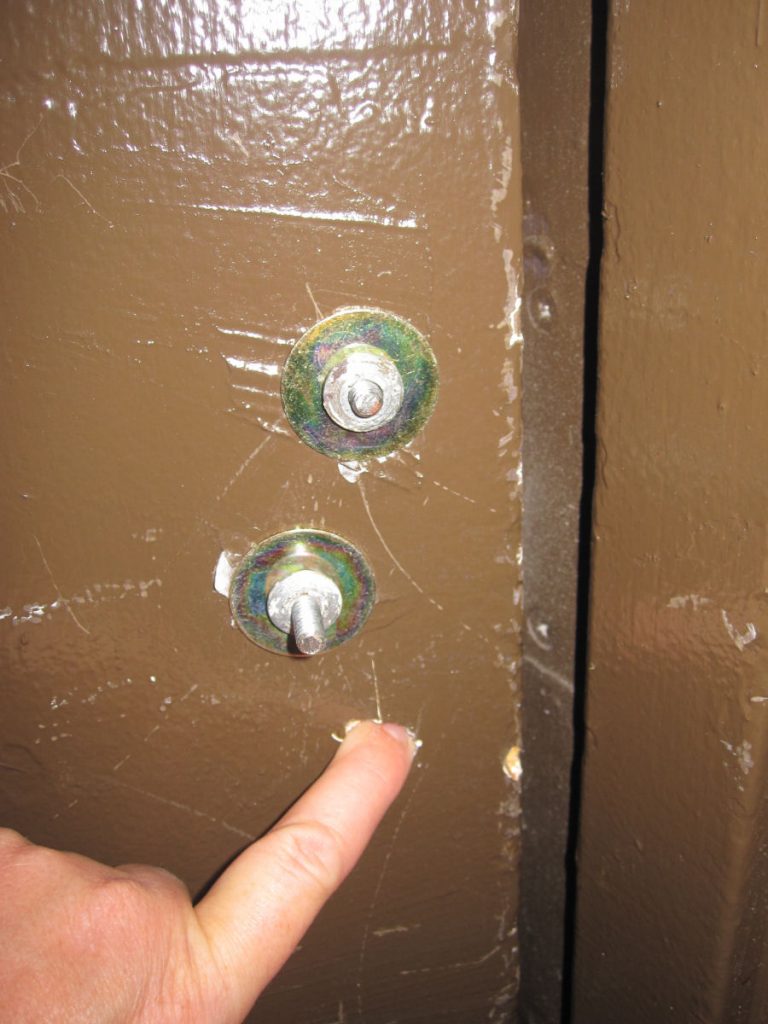
Incorrect or missing fasteners can impact the performance of a fire door – both functionally on a day-to-day basis, and during a fire.
Standard hinges are not typically required to bear a label indicating that they are listed for use on a fire door, but they must comply with the applicable referenced standard. Spring hinges must be labeled, as well as meeting the Grade 1 standards of A156.17. All hanging devices – hinges, spring hinges, continuous hinges, and pivots, must be provided as specified in the door and hardware manufacturer’s published listings or in accordance with NFPA 80. Various types of hinges are referenced in Annex A of NFPA 80, including 5-, 3-, and 2-knuckle hinges, full-mortise, half-mortise, full-surface, and half-surface hinges, and spring hinges, wide-throw, raised-barrel, and swing-clear designs.
A table within NFPA 80 includes a lot of important information about hinges for fire door assemblies. In recent editions of the standard, it is Table 6.4.3.1 – Builders Hardware: Hinges, Spring Hinges, and Pivots. The table specifies the minimum hinge size, type, and thickness, based on the door rating, width, and height. This table should be consulted to determine the correct hinge for each fire door assembly. For example, a steel hinge, mortise or surface-mounted, on a fire door that is 3 feet wide and 7 feet high must be at least 4 1/2 inches high and 0.134 inches thick. The maximum door size shown on this table for spring hinges is 3 feet wide and 7 feet high, so spring hinges installed on larger fire doors must be listed by the manufacturer for the appropriate door size.
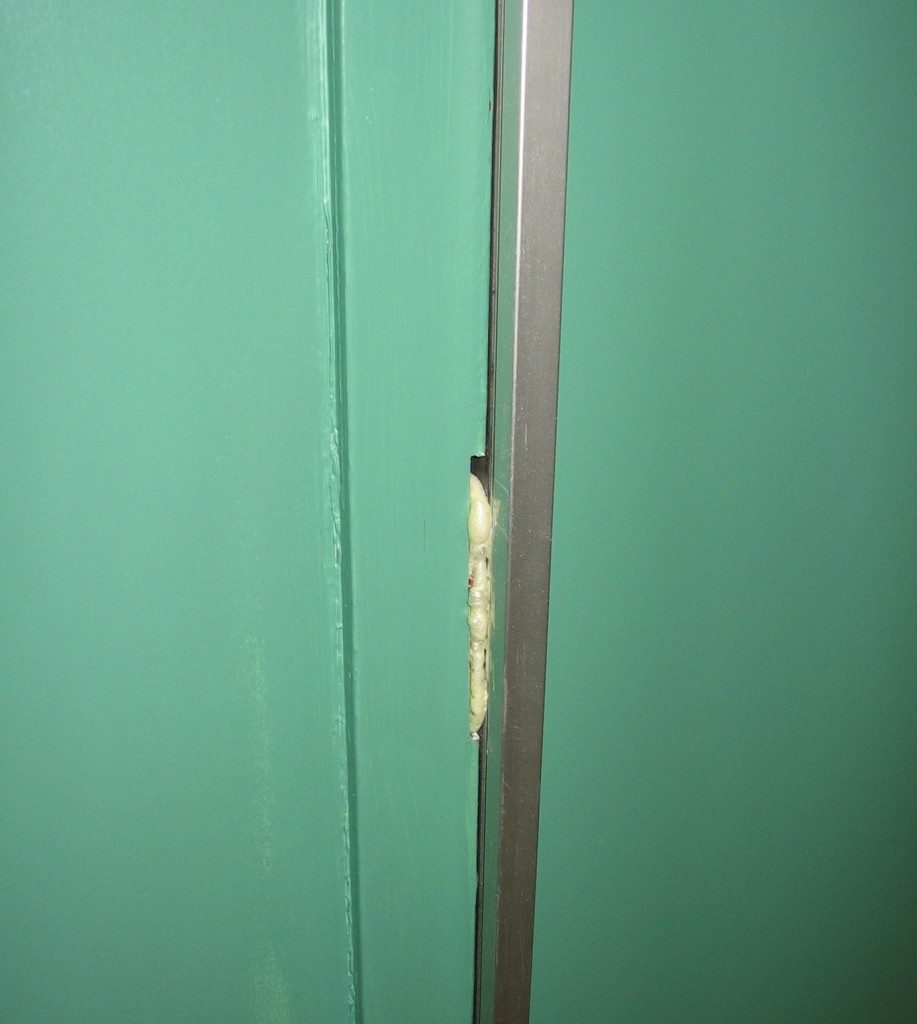
Using foam insulation to fill an existing hinge prep on a fire door assembly is not a method that is allowed by the manufacturers’ listings.
Spring hinges are defined by NFPA 80 as, “A closing device in the form of a hinge with a built-in spring used to hang and close the door.” When spring hinges are installed on a fire door, NFPA 80 requires at least 2 spring hinges to be used, but does not specify which hinge locations the spring hinges must be installed in (top, center, or bottom hinge positions). Annex A suggests that spring hinges should be adjusted so that the door will latch properly when allowed to close freely from an open position of 30 degrees. This may be difficult to achieve long-term, and door closers are often used on fire doors because they provide greater control of the door and more reliable operation.
Fire door assemblies are required to have an adequate quantity of hinges as specified in the standard. A door up to 60 inches in height must have two hinges. Doors over 60 inches tall are required to have one additional hinge for each additional 30 inches of door height (or fraction thereof). For example, a 90-inch door would have 3 hinges, and a 100-inch door would have 4. Annex F – Door Hardware Locations, includes diagrams showing hinge locations for different types of swinging fire doors, but it’s acceptable for a manufacturer’s listings to allow hinges in alternate locations. NFPA 80 states that the distance between hinges may be greater than 30 inches.
NFPA 80 requires all hinges and pivots to be ball-bearing type, except for spring hinges, but other antifriction bearing surfaces are allowed if they meet the requirements of ANSI/BHMA A156.1 – Standard for Butts and Hinges. For hinges that are not of the ball bearing type, or are of lighter weight than what is allowed by Table 6.4.3.1, the hinges may be used if they are part of a listed assembly, and meet the test requirements of A156.1, and they have been tested to a minimum of 350,000 cycles. Pivot sets which are smaller or lighter weight than the minimums shown in Table 6.4.3.1 must meet the requirements of A156.4 – the standard for door controls (which also includes pivot requirements), and must be in accordance with the manufacturer’s label service procedures.
New requirements for pivots were added to NFPA 80 in the 2013 edition. The standard now mandates the quantity of pivots required for fire doors – a pivot set consisting of a top and bottom pivot and one intermediate pivot for doors up to 90 inches in height. For door heights greater than 90 inches, an additional intermediate pivot is required for each additional 30 inches of door height, or fraction thereof. NFPA 80 also allows the use of only intermediate pivots rather than a top and bottom pivot set. In some cases, this application is preferred for aesthetic reasons or because of the design of the frame. If only intermediate pivots are used, the quantities are the same as the requirements for hinges – two intermediate pivots for doors up to 60 inches in height, and an additional intermediate pivot for each additional 30 inches of door height or fraction thereof.
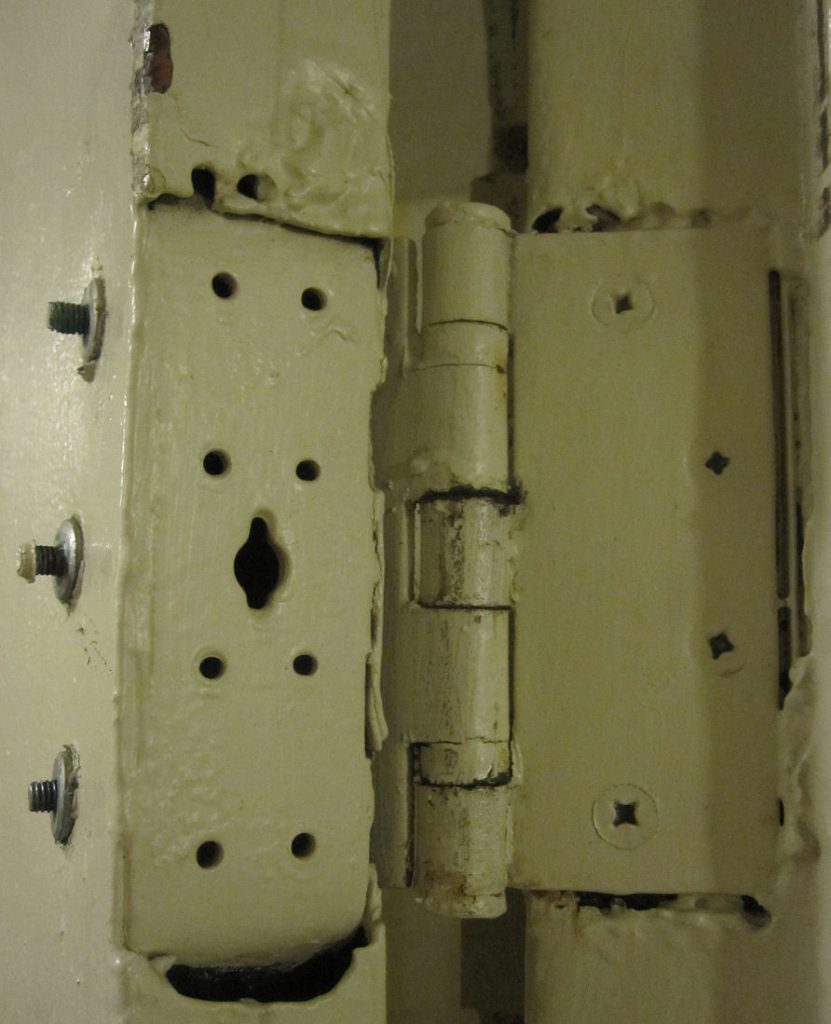
When hinge reinforcements become damaged, creative modifications like this one can result in a non-code-compliant fire door assembly.
Requirements for continuous hinges were also added to NFPA 80 in the 2013 edition. Continuous hinges must be labeled and are required to comply with ANSI/BHMA A156.26, the standard for continuous hinges. The standard states that the length of continuous hinges must be within 1 inch of the height of the door leaves. Continuous hinges manufactured from steel, stainless steel, and aluminum are available for use on fire door assemblies, but only labeled continuous hinges may be used. When a continuous hinge is installed on a fire door assembly, labels that would be covered on the door and/or frame should be attached in an alternate location so they are visible for the life of the assembly. If a door or frame was prepped for standard hinges, and a continuous hinge is installed, the existing hinge preps need to be addressed in a manner that is acceptable per the manufacturer’s published listings.
One of the common problems regarding hinges on fire doors is related to the failure of the fastening method. Hinges are required to be secured as described in the manufacturer’s installation instructions and published listings. The standard specifies the type of fasteners that must be used – steel machine screws to secure mortise hinges to reinforcements in a door, and steel wood screws (No. 12 x 1 1/4 inch flat, threaded-to-the-head) for mortise hinges attached to wood and composite doors. Pilot holes must be drilled for these fasteners (5/32-inch in diameter). Steel through-bolts are required for surface-mounted hinges. For attachment to the frame, hinges must be secured with steel screws, but the type of screw will vary depending on the frame material.
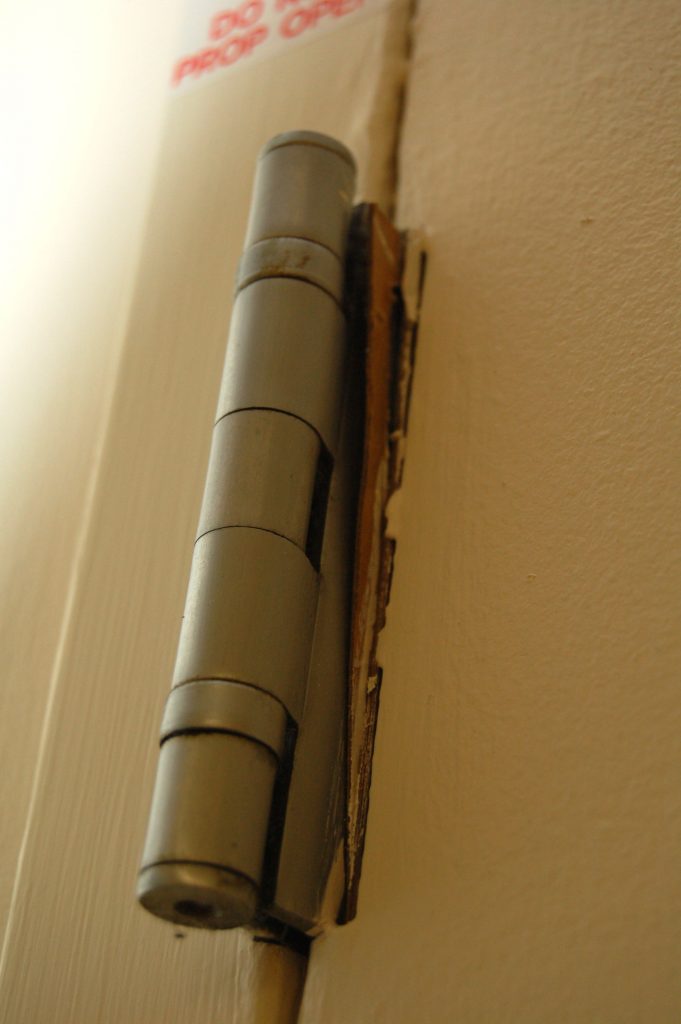
Hinges on fire doors may be shimmed, but steel shims must be used. Shims of cardboard, wood, plastic, or other materials do not meet the requirements of NFPA 80.
In some cases, hinges must be shimmed during or after installation to properly align the door in the frame and bring clearances into compliance with NFPA 80. Shimming is allowed, but steel shims must be used. If correct clearances cannot be achieved by shimming the hinges, the NFPA 80 Handbook suggests adjusting compression anchors and/or repositioning sill anchors on slip-on drywall frames, or removing and reinstalling the frame. It’s much less disruptive to shim the hinges if possible, but shims of cardboard, wood, or other materials are not allowed for use on a fire door assembly.
The hanging components – hinges, pivots, and continuous hinges – are just one part of a fire door assembly, but they play an important role. If the hinges are specified, supplied, or installed incorrectly, the door will not swing freely. Incorrect fasteners may cause the door to sag or even come loose from the frame. Clearances can be affected by this misalignment, and the door may not close and latch properly, impacting the ability of the assembly to deter the spread of smoke and flames during a fire. The inspection requirements of NFPA 80 include verification that all components of a fire door assembly, including the hinges, “are secured, aligned, and in working order with no visible signs of damage;” Annex A indicates that hinges are one of the items that are especially subject to wear.
For more information on fire door assemblies, refer to NFPA 80 – Standard for Fire Doors and Other Opening Protectives, or to the Fire Door page on iDigHardware.
You need to login or register to bookmark/favorite this content.

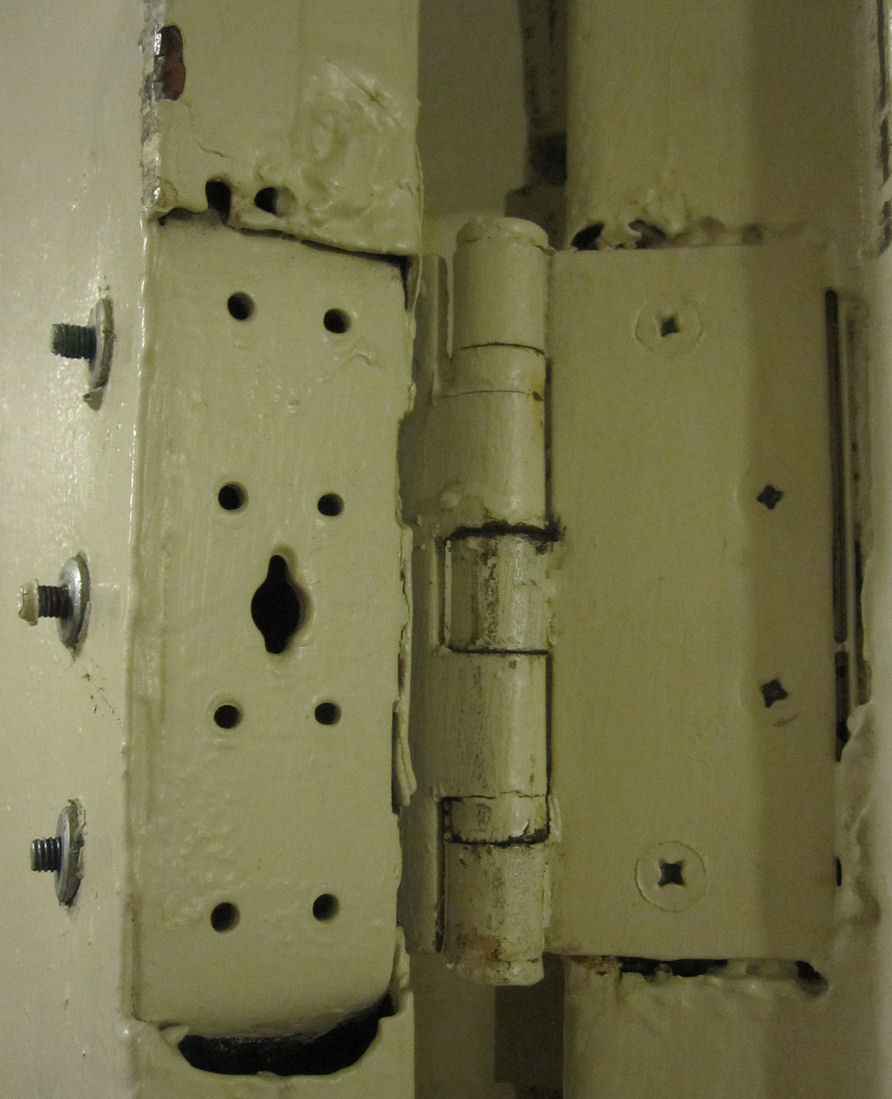
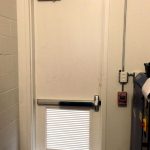
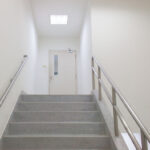

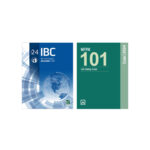




Very good article…
And the oldest question,,,,,
Where should the door be,,,, when you test to see if the rated door will close and latch???
Fully open
Half open
39 degrees
One inch open
Or depends on what year the door was installed and under which edition of NFPA 80????
Happy New Code Year!!
It currently depends on which code/referenced standard is being enforced, but we’re working on making the requirements more consistent!
– Lori
good article-but-from 3rd paragraph. standard hinges are not typically required to bear a label indicating that they are listed for use on a fire door, but they must comply with the applicable referenced standard. -is 7.4.3.1.1 (2010 standards) overruled by a more recent standard?
Not sure if you have done a segment on door closing test??
Maybe if not can list the year edition and test method
Happy 2024
In your Decoded posting on Jan 2, 2024, regarding fire door hinges, you wrote that the hinges are not usually labeled.
Some years ago I had access to the NFPA 80 handbook and noted that it stated hinges are to be labeled.
So, is the literal interpretation of 6.4.3.1. that the hinges don’t need to be labeled if they form part of the manufacturer’s door listing?
Hi Mike –
NFPA 80 details the requirements for hinges – steel, ball bearing, hinge size, quantity, etc. If the hinges meet these requirements, NFPA 80 does not require each hinge to be labeled. The standard states: “Specification of items of a generic nature, such as hinges, that are not labeled shall comply with the specifications contained in this standard.” For other types of hinges, such as continuous hinges, the label is required.
– Lori